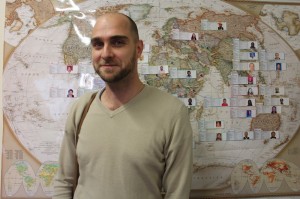The Daily Vox is running a series of blogs written by DR STEFAN KRUGER, who is in Sierra Leone with Doctors Without Borders (MSF) to help combat the spread of Ebola in the region.
Entry 3: Enter the isolation zone
With training done, all boxes checked and the green light given, I enter the isolation unit for the first time. My first patient is a nurse from a nearby clinic. He has been seeing many patients, some suspected to have Ebola. He has now fallen ill himself. We collect his blood sample for testing. This is quite a process as well. The sample container is decontaminated with chlorine, it is placed in a plastic bag which again is decontaminated and upon our exit is placed in another bag and decontaminated again. The laboratory will do a highly specialised test, called a Polymerase Chain Reaction, and before lunchtime we will know his result. I pray it will be negative, but he looks quite poorly.

Read Kruger’s second entry here.
Doctors without Borders (MSF) is currently working in Sierra Leone, Guinea and Liberia to combat the spread of Ebola across the region. To support this work, go to http://msf.org.za/donate or SMS “JOIN†to 42110 to donate R30. To receive direct updates about Ebola from Doctors without Borders (MSF) SA, e-mail your name to updates@msf.org.za with the subject line “Ebolaâ€.
– Featured image via Sylvain Cherkaoui/Cosmos/MSF

![Ebola outbreak West Africa [msf] [sylvain cherkaoui]](https://www.thedailyvox.co.za/wp-content/uploads/2014/08/Ebola-outbreak-West-Africa-msf-sylvain-cherkaoui.jpg)







